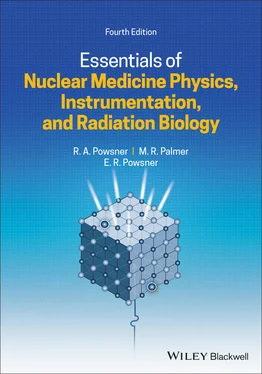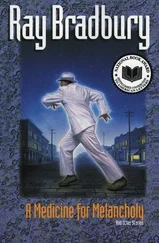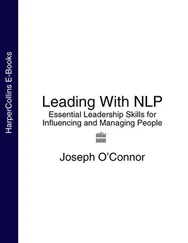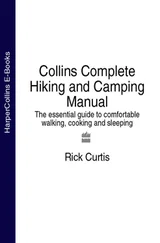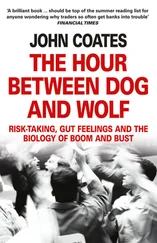Rachel A. Powsner - Essentials of Nuclear Medicine Physics, Instrumentation, and Radiation Biology
Здесь есть возможность читать онлайн «Rachel A. Powsner - Essentials of Nuclear Medicine Physics, Instrumentation, and Radiation Biology» — ознакомительный отрывок электронной книги совершенно бесплатно, а после прочтения отрывка купить полную версию. В некоторых случаях можно слушать аудио, скачать через торрент в формате fb2 и присутствует краткое содержание. Жанр: unrecognised, на английском языке. Описание произведения, (предисловие) а так же отзывы посетителей доступны на портале библиотеки ЛибКат.
- Название:Essentials of Nuclear Medicine Physics, Instrumentation, and Radiation Biology
- Автор:
- Жанр:
- Год:неизвестен
- ISBN:нет данных
- Рейтинг книги:4 / 5. Голосов: 1
-
Избранное:Добавить в избранное
- Отзывы:
-
Ваша оценка:
- 80
- 1
- 2
- 3
- 4
- 5
Essentials of Nuclear Medicine Physics, Instrumentation, and Radiation Biology: краткое содержание, описание и аннотация
Предлагаем к чтению аннотацию, описание, краткое содержание или предисловие (зависит от того, что написал сам автор книги «Essentials of Nuclear Medicine Physics, Instrumentation, and Radiation Biology»). Если вы не нашли необходимую информацию о книге — напишите в комментариях, мы постараемся отыскать её.
Essentials of Nuclear Medicine Physics, Instrumentation, and Radiation Biology — читать онлайн ознакомительный отрывок
Ниже представлен текст книги, разбитый по страницам. Система сохранения места последней прочитанной страницы, позволяет с удобством читать онлайн бесплатно книгу «Essentials of Nuclear Medicine Physics, Instrumentation, and Radiation Biology», без необходимости каждый раз заново искать на чём Вы остановились. Поставьте закладку, и сможете в любой момент перейти на страницу, на которой закончили чтение.
Интервал:
Закладка:
Library of Congress Cataloging‐in‐Publication Data
Names: Powsner, Rachel A. author. | Palmer, Matthew R., 1958‐ author. | Powsner, Edward R., 1926‐ author.
Title: Essentials of nuclear medicine physics, instrumentation, and radiation biology / Rachel A. Powsner, Matthew R. Palmer, Edward R. Powsner.
Other titles: Essentials of nuclear medicine physics
Description: Fourth edition. | Hoboken, NJ : Wiley‐Blackwell, 2022. | Preceded by: Essentials of nuclear medicine physics and instrumentation / Rachel A. Powsner, Matthew R. Palmer, Edward R. Powsner. Third edition. Chichester, West Sussex, UK : Wiley‐Blackwell, 2013. | Includes bibliographical references and index.
Identifiers: LCCN 2021032438 (print) | LCCN 2021032439 (ebook) | ISBN 9781119620990 (paperback) | ISBN 9781119621003 (adobe pdf) | ISBN 9781119621010 (epub)
Subjects: MESH: Nuclear Medicine | Nuclear Medicine–instrumentation | Nuclear Physics | Radiation, Ionizing | Radiation Effects | Radioactive Hazard Release–prevention & control
Classification: LCC R896.7 (print) | LCC R896.7 (ebook) | NLM WN 440 | DDC 616.07/575–dc23
LC record available at https://lccn.loc.gov/2021032438LC ebook record available at https://lccn.loc.gov/2021032439
Cover Design: Wiley
Cover Image: © Courtesy of Rachel A. Powsner
Preface
After many years of postgraduate training, many physicians have forgotten some (or most) of their undergraduate and high school physics and may find submersion into nuclear physics somewhat daunting. This book begins with a very basic introduction to nuclear physics and the interactions of radiation and matter. It then proceeds with a discussion of the methods for production of nuclides and the instrumentation used for dose measurement, surveying radioactivity, and imaging. The imaging section has been expanded to cover MRI and PET‐MRI in addition to SPECT, PET, and PET‐CT. The final chapters of the book focus on radiation biology, radiation safety, radiopharmaceutical therapy, and radiation accidents.
Numerous illustrations are included. They are highly schematic and are designed to illustrate concepts rather than represent scale models of their subjects. This text is intended for radiology residents, cardiology fellows, nuclear medicine residents and fellows, nuclear medicine technology students, and others interested in an introduction to concepts in nuclear medicine physics and instrumentation.
Rachel A. Powsner
Matthew R. Palmer
Acknowledgments
The authors would like to thank the following experts for their help with this edition: Larry Panych, PhD for his in‐depth critique and suggestions for the MRI chapter, Annick Van Den Abbeele, MD, FACR, and Kun Huang, MD, for their review and corrections of the chapters on radiopharmaceutical therapy and radiation biology, respectively, and Chad Smith, PhD for his review of radiation safety and dosimetry. We are grateful for the assistance of Arda Konik, PhD for his guidance on interpretation of GE PET QC images as well as Mr. Brandon Clifton and Jeanette Y. Kleier, RT (R)(N), CNMT for help with understanding Philips PET and SPECT QC images and Stephen Baker for his aid with Siemens PET QC images. In addition, Mr. Mitchell Kruzel from Nuclear Fields provided helpful information on current utility of collimator designs.
Since this edition is built upon information included in prior editions, the authors would like to thank the following individuals for their help on the third edition: Anupma Jati, MD for critiquing the CT dosimetry section of the text, Gary Murphy, RT, for help with CT QC questions and Kandace Craft, RTN and Chris Lindsey, FSE for information about PET‐CT. P. Satish Nair, PhD generously made comments on the dosimetry chapter. David Drum, MD answered numerous questions about radiation safety and dosimetry. J. Anthony Parker, MD was helpful on the topic of cancer induction from low‐dose ionizing radiation as well as serving as a reference for an assortment of other specific questions.
For the second edition the following individuals were most generous with information: Stephen Moore, PhD on the topic of SPECT processing including iterative reconstruction, Fred Fahey, DSc on PET instrumentation, and Robert Zimmerman, MSEE on gamma camera quality control and the physics of crystal scintillators. In addition, Dr. Frank Masse generously reviewed the material on radiation accidents and Mark Walsh, CHP critiqued the radiation safety text.
We would also like to thank the following individuals for their help in reviewing portions of the first edition during its preparation: David Rockwell, MD, Maura Dineen‐Burton, CNMT, Dipa Patel, MD, Alfonse Taghian, MD, Hernan Jara, PhD, Susan Gussenhoven, PhD, John Shaw, MS, Michael Squillante, PhD, Kevin Buckley, CHP, Jayne Caruso, Victor Lee, MD, Toby Wroblicka, MD, Dan Winder, MD, Dennis Atkinson, MD, and Inna Gazit, MD. Thanks to Peter Shomphe, ARRT, CNMT, Bob Dann, PhD, and Laura Partriquin, MD for wading through the manuscript in its entirety. We greatly appreciate the patience shown at that time by Robert Zimmerman, MSEE, Kevin Buckley, CHP, John Widman, PhD, CHP, Peter Waer, PhD, Stephen Moore, PhD, Bill Worstell, PhD, and Hernan Jara, PhD while answering our numerous questions. Thanks to Delia Edwards, Milda Pitter, and Paul Guidone, MD for taking time to pose as models. The authors would also like to thank Rhoda M. Powsner, MD for her assistance in reviewing sections of the text and for proofreading the review questions.
CHAPTER 1 Basic Nuclear Medicine Physics
Properties and structure of matter
Matter has several fundamental properties. For our purposes the most important are mass and charge (electric). We recognize mass by the force gravity exerts on a material object (commonly referred to as its weight) and by the object’s inertia, which is the “resistance” we encounter when we attempt to change the position or motion of a material object.
Similarly, we can, at least at times, recognize charge by the direct effect it can have on us, or that we can observe it to have on inanimate objects. For example, we may feel the presence of a strongly charged object when it causes our hair to move or even to stand on end. More often than not, however, we are insensitive to charge. But whether grossly detectable or not, its effects must be considered here because of the role charge plays in the structure of matter.
Charge is generally thought to have been recognized first by the ancient Greeks. They noticed that some kinds of matter, an amber rod for example, can be given an electric charge by rubbing it with a piece of cloth. Their experiments convinced them that there are two kinds of charge: opposite charges, which attract each other, and like charges, which repel. One kind of charge came to be called positive, the other negative. We now know that the negative charge is associated with electrons. The rubbing transferred some of the electrons from the atoms of the matter in the rod to the cloth. In a similar fashion, electrons can be transferred from a cat’s fur to a hand. After petting, the cat will have a net positive charge and the person a net negative charge ( Figure 1.1). With these basic properties in mind, we can look at matter in more detail.
Matter is composed of molecules. In any chemically pure material, the molecules are the smallest units that retain the characteristics of the material itself. For example, if a block of salt were to be broken into successively smaller pieces, the smallest fragment with the properties of salt would be a single salt molecule ( Figure 1.2). With further fragmentation, the molecule would no longer be salt. Molecules, in turn, are composed of atoms. Most molecules consist of more than one kind of atom—salt, for example, is made up of atoms of chlorine and atoms of sodium. The atoms themselves are composed of smaller particles, the subatomic particles, which are discussed later.
Читать дальшеИнтервал:
Закладка:
Похожие книги на «Essentials of Nuclear Medicine Physics, Instrumentation, and Radiation Biology»
Представляем Вашему вниманию похожие книги на «Essentials of Nuclear Medicine Physics, Instrumentation, and Radiation Biology» списком для выбора. Мы отобрали схожую по названию и смыслу литературу в надежде предоставить читателям больше вариантов отыскать новые, интересные, ещё непрочитанные произведения.
Обсуждение, отзывы о книге «Essentials of Nuclear Medicine Physics, Instrumentation, and Radiation Biology» и просто собственные мнения читателей. Оставьте ваши комментарии, напишите, что Вы думаете о произведении, его смысле или главных героях. Укажите что конкретно понравилось, а что нет, и почему Вы так считаете.
